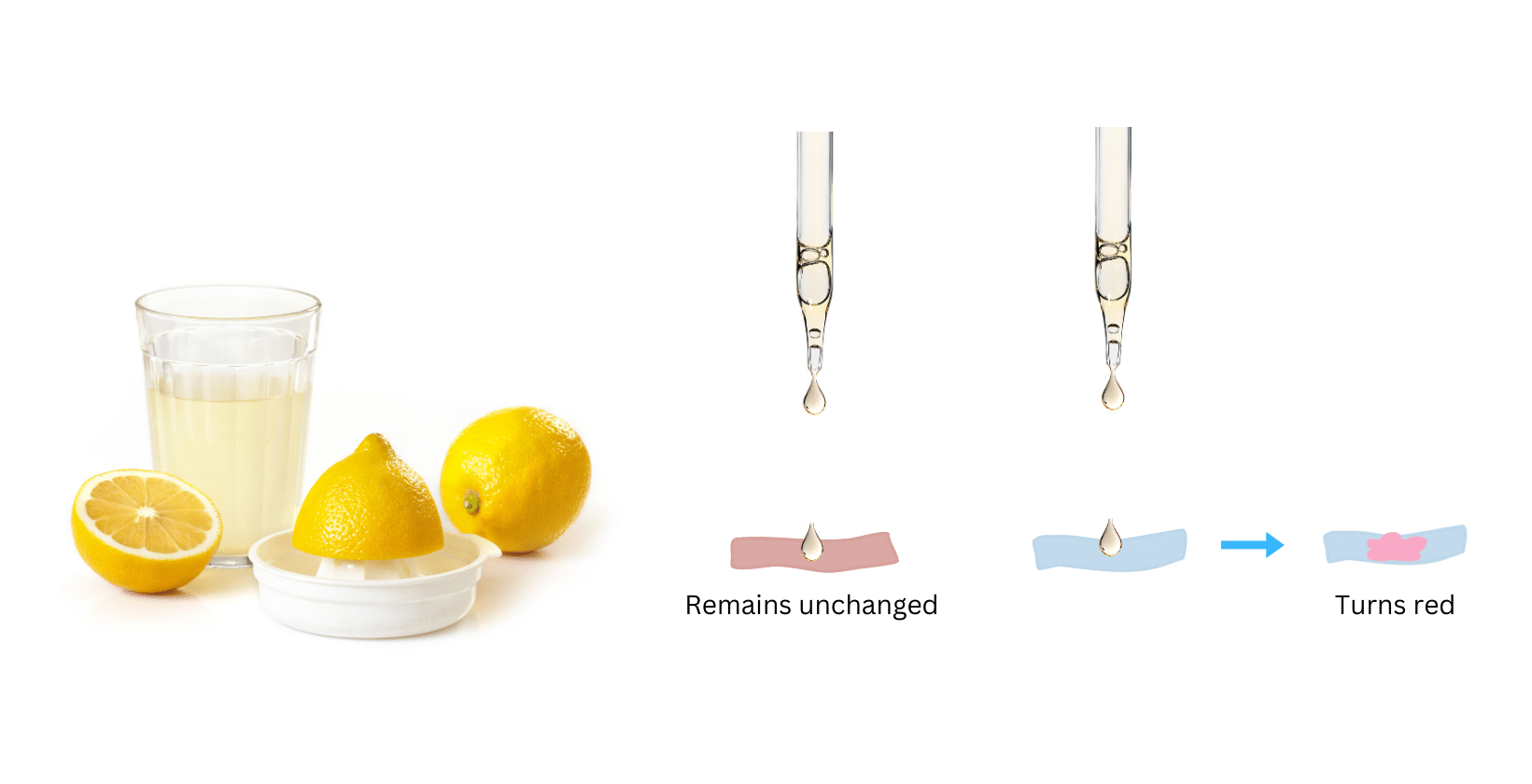1. Complete Activity 4.1 (Page 40).
- Mix some water with lemon juice in a plastic cup/tumbler/test tube.
- Put a drop of the above solution on a strip of the red litmus paper with the help of a dropper. Is there any change in colour?
- Repeat the same exercise with the blue litmus paper.
Note down if there is any change in colour. Perform the same activity with the following substances: Tap water, detergent solution, aerated drink, soap solution, shampoo, common salt solution, sugar solution, vinegar, baking soda solution, milk of magnesia, washing soda solution, lime water. If possible make solutions in distilled water. Record your observations as in Table. 4.2. In your Table, are there any substances on which litmus had no effect? Name those substances.
Answer:
The activity is described below:
Aim: To test the given substances with red and blue litmus paper.
Materials Required: Lemon juice, tap water, detergent solution, aerated drink, soap solution, shampoo, common salt solution, sugar solution, vinegar, baking soda solution, milk of magnesia, washing soda solution, lime water, distilled water, red and blue litmus paper, containers.
Procedure:
(i) Mix some amount of each of the given substances in distilled water in a container.
(ii) Put a drop of each solution on a strip of the red litmus paper and observe the change in colour.
(iii) Next, put a drop of each solution on a strip of the blue litmus paper and observe the change in colour.
Observations: The test for lemon juice is shown as an example below:

The completed Table 4.2 is shown below:
Table 4.2
| S. No. | Test Solution | Effect on red litmus paper | Effect on blue litmus paper | Inference |
| 1. | Lemon juice | Colour remains same. | Turns red. | Acidic |
| 2. | Tap water | Colour remains same. | Colour remains same. | Neutral |
| 3. | Detergent solution | Turns blue. | Colour remains same. | Basic |
| 4. | Aerated drink | Colour remains same. | Turns red. | Acidic |
| 5. | Soap solution | Turns blue. | Colour remains same. | Basic |
| 6. | Shampoo | Turns blue. | Colour remains same. | Basic |
| 7. | Common salt solution | Colour remains same. | Colour remains same. | Neutral |
| 8. | Sugar solution | Colour remains same | Colour remains same | Neutral |
| 9. | Vinegar | Colour remains same. | Turns red. | Acidic |
| 10. | Baking soda solution | Turns blue. | Colour remains same. | Basic |
| 11. | Milk of magnesia | Turns blue. | Colour remains same. | Basic |
| 12. | Washing soda solution | Turns blue. | Colour remains same. | Basic |
| 13. | Lime water | Turns blue. | Colour remains same. | Basic |
We can see that tap water, common salt solution and sugar solution have no effect on litmus.
Conclusions:
We conclude that:
- Acids have no effect on red litmus paper and turn blue litmus paper red.
- Bases have no effect on blue litmus paper and turn red litmus paper blue.
- The neutral solutions: tap water, common salt solution and sugar solution have no effect on both red and blue litmus paper.
“1. Complete Activity 4.1 (Page 40).
- Mix some water with lemon juice in a plastic cup/tumbler/test tube.
- Put a drop of the above solution on a strip of the red litmus paper with the help of a dropper. Is there any change in colour?
- Repeat the same exercise with the blue litmus paper.
Note down if there is any change in colour. Perform the same activity with the following substances: Tap water, detergent solution, aerated drink, soap solution, shampoo, common salt solution, sugar solution, vinegar, baking soda solution, milk of magnesia, washing soda solution, lime water. If possible make solutions in distilled water. Record your observations as in Table. 4.2. In your Table, are there any substances on which litmus had no effect? Name those substances.” – Solved
Related Links:
Solution to Extended Learning Question 1
Solution to Extended Learning Question 2
Solution to Extended Learning Question 3
Solution to Extended Learning Question 4
Solution to Activity 4.2
Solution to Activity 4.3
Solution to Activity 4.4
Solution to Chapter 4 Acids, Bases and Salts


